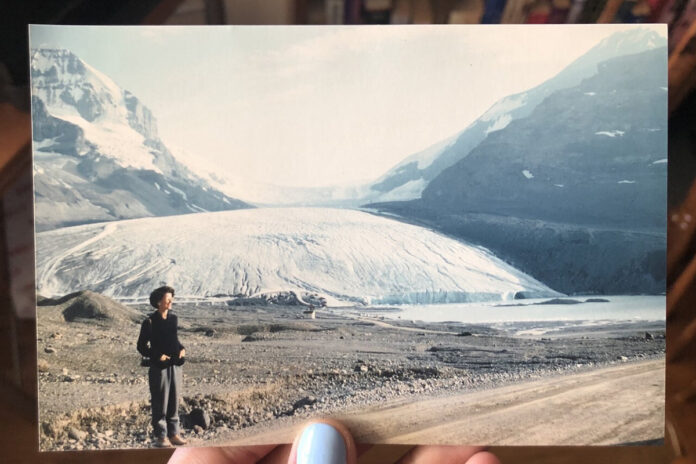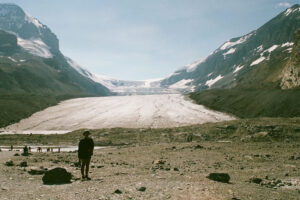
In 2020, Jess Duncan visited the Athabasca Glacier, part of Jasper National Park’s Columbia Icefield in Alberta, to recreate her grandmother’s photos from the late 1950s. Her photos revealed a drastic recession in the ice levels of the glacier.
The glacier’s melt is accelerating due to wildfire smoke and is putting the structure at risk of disappearing entirely, according to a study by a group of University of Saskatchewan hydrology researchers.
PhD candidates Caroline Aubry-Wake and Andre Bertoncini worked together to observe the melt seasons from 2015 to 2020 under the supervision of John Pomeroy, a geography professor and Canada Research Chair in Water Resources and Climate Change.
Aubry-Wake monitored weather conditions from the top of the glacier and published her half of the study in April 2022. Bertoncini published his half of the study in May 2022, providing a broader context for Aubry-Wake’s findings by observing the entire Columbia Icefield with satellite imagery.
The pair discovered that soot from wildfires is gradually blackening the glacier and leaving it darker in subsequent years, reducing its ability to reflect sunlight, although heavy smoke has partially blocked the sunlight and minimally protected the glacier.
The Athabasca Glacier is legally protected as a UNESCO World Heritage Site for its natural significance as the largest icefield in the Canadian Rockies.
Aubry-Wake said glaciers serve as natural water towers, providing water runoff for plants and animals in the drier summer months.
Glacier melt is threatening this process, Bertoncini added, as fires earlier in the year could affect the amount of runoff later in the summer. More ice melting earlier on will reduce the amount of water that would normally be flowing in August.
The researchers said smaller fires are a natural process in boreal forests to regenerate new plants, with more nutrients available in the soil. By preventing these blazes from occurring, the risk of wildfires increases, especially as the global climate warms.
“Because we’ve prevented fires from occurring for the last many decades, now we have huge swaths of land that are primed to burn so now, when there [are] fires, they’re really big instead of having a lot of small fires,” Aubry-Wake said.
She added this phenomenon is causing a “perfect storm” where the forest is naturally set to burn and regenerate but the fires worsen and occur more often due to a drier and hotter environment.

“It flows into three different rivers in three different directions so it’s obviously very environmentally important … but also it’s a very heavily visited glacier and it really gives a ton of people visual evidence of glacier recession,” Duncan said. “Recessions happen naturally, but it is receding very, very quickly.”
Duncan’s photos capture the changes in the glacier throughout the past few decades.
“It’s obviously very environmentally important … but also it’s a very heavily visited glacier and it really gives a ton of people visual evidence of glacier recession.”
She said she was inspired to recreate her grandmother’s pictures of the Athabasca Glacier by the University of Victoria’s Mountain Legacy Project, which she worked on at the time. There, she helped compare archival photos with re-creations to track changes in mountains.
“It was very easy to visualize the change, which I feel like is not something you get very frequently,” she said. “I also just generally found it very interesting … to see the change just within one person’s lifetime.”
Though the researchers mentioned they do not know what should be done to slow the melt, they acknowledged the need for reducing carbon emissions and continuing research. They added that research is the first step to slowing the melt.
“Without evidence, it’s going to be really hard to do anything to prepare and adapt to changes,” Aubry-Wake said. “As scientists, we have the capacity to provide some of that knowledge.”
Featured photo provided by Jess Duncan.





